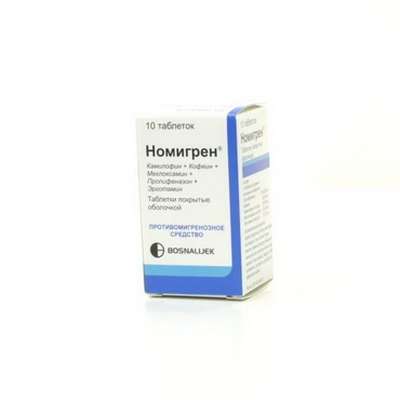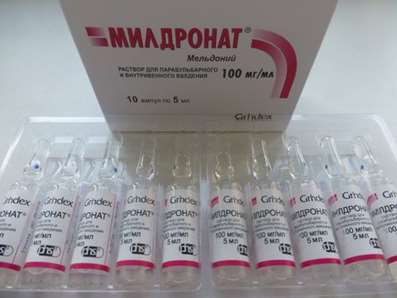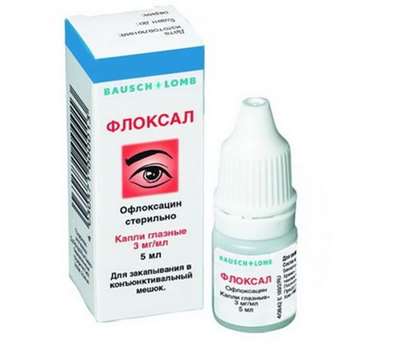Instruction for use: Resolor
I want this, give me price
Dosage form: Film-coated tablets
Active substance: Prucalopride*
ATX
A06AX05 Prukalopride
Pharmacological groups:
Serotonin receptor stimulant [Serotonergic drugs]
Serotonin receptor stimulant [Laxatives]
The nosological classification (ICD-10)
K59.0 Constipation: Painful defecation; Age-related constipation; Secondary Constipation Discease; Constipation when breastfeeding; Constipated constipation; Constipation in adults; Constipation chronic; Idiopathic constipation; Cataract obstruction; Colostasis; Constipation; Common constipation; Rectal coprostasis; Tendency to constipation; Occasional constipation; Decrease in motor-evacuation function of the digestive tract; Functional constipation; Chronic constipation; Chronic constipation; Constipation in infants
Composition
Tablets, coated with a film membrane 1 tab.
active substance: Prukalopride succinate 1.321 mg; 2.642 mg
(In terms of naprucalopride - 1 or 2 mg, respectively)
Excipients
Core: lactose monohydrate - 149,969 / 165,458 mg; MCC - 27/30 mg; Silicon dioxide colloidal - 0.36 / 0.4 mg; Magnesium stearate - 1.35 / 1.5 mg
Film coating white 1 (tablets, 1 mg): - 6 mg (in percent by weight: hypromellose 6 cP - 40%, titanium dioxide - 24%, macrogol 3000 - 8%, triacetin - 6%, lactose monohydrate - 22%)
(Tablets, 2 mg): - 7 mg (in percent by weight: hypromellose 6 cP - 40%, iron dye red oxide (E172) - 0.09%, titanium dioxide 23.88%, macrogol 3000 - 8%, triacetin 6%, lactose monohydrate 22%, indigocarmine (E132) 0.02%, iron dye oxide yellow (E172) 0.01%)
Description of dosage form
The tablets covered with a film cover, 1 mg: round biconcave, covered with a film shell of white or almost white color. On one side - engraving "PRU 1".
The tablets covered with a film cover, 2 mg: round biconcave, covered with a film cover of pink color. On one side - engraving "PRU 2".
On the cross-section, the core of the tablet is white or almost white in color.
Pharmachologic effect
Mode of action - a laxative.
Pharmacodynamics
Mechanism of action
Prukalopride is a dihydrobenzofurancarboxamide that enhances intestinal motility. Prukalopride is a selective, high affinity 5HT4-serotonin receptor agonist, which most likely explains its effect on intestinal motility. Binding to other types of receptors in vitro was observed only at concentrations of the substance exceeding its affinity for HT4 receptors by at least 150 times.
Pharmacokinetics
Suction
Prukalopride is rapidly absorbed; After a single oral dose of 2 mg Cmax is achieved after 2-3 hours. Absolute bioavailability after oral intake exceeds 90%. The intake of the drug during meals does not affect bioavailability.
Distribution
Prukalopride is distributed throughout the body, Vss is 567 liters. Binding to plasma proteins is approximately 30%.
Metabolism
The metabolism of the drug in the human liver in vitro proceeds very slowly, and only a small amount of metabolites is formed. After oral administration of 14C-labeled prucalopride in human urine and feces, 8 metabolites are found in small amounts. The main metabolite (R107504, formed by O-demethylation of prukalopride and oxidation of the alcohol to carboxylic acid) is less than 4% of the administered dose of the drug. As studies with a radioactive label showed, about 85% of the drug remains unchanged; The metabolite R107504 is present in the plasma in a small amount.
Excretion
Most of the orally taken dose of the active ingredient is excreted unchanged (approximately 60% by the kidneys and at least 6% with feces). Excretion of unchanged prucalopride by the kidneys includes passive filtration and active secretion. The clearance of prucalopride from plasma is an average of 317 ml / min, the final T1 / 2 is approximately 1 day. The equilibrium state is achieved after 3-4 days of taking the drug, and when taking prucalopride at a dose of 2 mg 1 time per day, Cmin and Cmax in the blood plasma in equilibrium are 2.5 and 7 ng / ml, respectively. When you take 1 time per day, the coefficient k of the drug ranges from 1.9 to 2.3. The pharmacokinetics of prucalopride linearly depend on the dose in the range up to 20 mg / day. With long-term use of the drug once a day, its pharmacokinetics does not depend on the duration of administration.
Special categories of patients
Population pharmacokinetics. Population pharmacokinetics analysis showed that the total clearance of prucalopride correlates with Cl creatinine and does not depend on the age, body weight, sex or race of patients.
Elderly patients. When taking the drug in elderly patients at a dose of 1 mg 1 time per day, Cmax prucalopride in blood plasma and AUC were 26 and 28%, respectively, greater than in young patients. This difference may be due to the weakening of kidney function in the elderly.
Impaired renal function. Compared with patients with normal renal function, in patients with a weak (Cl creatinine 50-79 ml / min) and moderately expressed (Cl creatinine 25-49 ml / min) impaired renal function, the concentration of prucalopride in the blood plasma after a single dose of 2 Mg was increased by 25 and 51%, respectively. In patients with severe renal dysfunction (Cl creatinine less than 24 ml / min), the concentration of prucalopride in blood plasma was 2.3 times higher than in healthy people.
Violation of the function of the liver. About 35% of prucalopril is excreted extrarenally, therefore, a violation of liver function is unlikely to clinically significantly change the pharmacokinetics of the drug.
Children. After a single oral dose of prucalopride at a dose of 0.03 mg / kg in children aged 4-12 years, the Cmax of the drug was the same as after administration of the drug to adults at a dose of 2 mg, and the AUC of the unbound fraction of the drug was 30-40% less than In adults, and did not depend on the age of the children. The median T1 / 2 drug in the terminal phase is approximately 19 hours in children (range 11.6-26.8 hours).
Indications for the drug Resolor
Symptomatic therapy of chronic constipation in women whose laxatives did not provide sufficient effect in eliminating symptoms.
Contraindications
Hypersensitivity to the active component or any auxiliary substance;
Impaired renal function requiring dialysis;
Perforation or bowel obstruction due to anatomical or functional disorders of the intestinal wall, mechanical intestinal obstruction, severe intestinal inflammation, eg Crohn's disease, ulcerative colitis and toxic megacolon / megarectum;
Congenital lactase deficiency, lactose intolerance, glucose-galactose malabsorption.
With caution: the use of the drug in patients with severe and clinically unstable concomitant diseases (liver, lung, cardiovascular, neurological, endocrine, psychiatric disorders, oncological diseases, AIDS) has not been studied. Caution should be exercised when prescribing Resolor to patients with such diseases. In particular, caution should be used in patients with cardiac arrhythmia or ischemic heart disease in the anamnesis.
Application in pregnancy and breastfeeding
The experience with prucalopride during pregnancy is limited. In clinical trials, incidents of miscarriage have been reported, although, given the presence of other risk factors, the association of these phenomena with prucalopride remains unproven. Studies in animals showed no direct or indirect adverse effects on the course of pregnancy, embryo / fetal development, childbirth and postnatal development of offspring. The drug Resolor is not recommended for use during pregnancy. During the treatment with prukalopride, women capable of childbearing should use adequate methods of contraception.
Prukalopride is excreted in breast milk, but when applied in therapeutic doses, the drug is unlikely to affect newborns / infants. Due to the lack of data on the use of lactating mothers, the drug is not recommended for use during breastfeeding.
Studies in animals have not revealed any effect of the drug on the fertility of males and females.
Side effects
The most frequent adverse reactions with the use of the Resolor drug were headache and unwanted reactions from the gastrointestinal tract (abdominal pain, nausea, diarrhea), each of which was observed in approximately 20% of patients. Unwanted reactions developed mainly at the beginning of treatment and usually disappeared after a few days, without requiring the withdrawal of treatment. Other undesirable reactions were observed sporadically. Most adverse adverse reactions were mild or moderate.
At the recommended dose of Prukalopride 2 mg, the following undesirable reactions were recorded in clinical trials, the frequency of which is indicated as very often (≥1 / 10); Often (≥1 / 100, <1/10); Infrequently (≥1 / 1000, <1/100); Rarely (≥1 / 10000, <1/1000); Very rarely (<1/10000), including isolated cases.
From the side of the central nervous system: very often - headache; Often - dizziness; Infrequently - a tremor.
From the CVS: infrequent - palpitations.
From the digestive tract: very often - nausea, diarrhea, abdominal pain; Often - vomiting, indigestion, rectal bleeding, flatulence, pathological intestinal noises; Infrequently - anorexia.
From the genitourinary system: often - pollakiuria.
General: often - weakness; Infrequently - a fever, bad state of health.
Interaction
In vitro data indicate a weak ability of prukalopride to interact, and in therapeutic concentrations it is unlikely to affect the metabolism of concomitant drugs carried out by the enzymes of the cytochrome system. Although prucalopride may mildly bind to the P-glycoprotein, it does not inhibit P-glycoprotein activity at clinically significant concentrations.
A powerful inhibitor of CYP3A4 and P-glycoprotein-ketoconazole-increased the AUC of prucalopride by about 40% 2 times a day at a dose of 200 mg twice a day. This effect is too small to be clinically significant, and is most likely related to the suppression of the pr-glycoprotein-active prucalopride in the kidneys. The same interaction as with ketoconazole can be observed with other active inhibitors of the P-glycoprotein, for example, verapamil, cyclosporin A, and quinidine. Prukalopride, most likely, is also transported in the kidney and other vectors. Theoretically, suppression of activity of all carriers participating in active secretion of prucalopride in the kidneys (including P-glycoprotein) can increase the level of its systemic exposure by 75%.
Studies involving healthy volunteers showed no clinically significant effect of prucalopride on the pharmacokinetics of warfarin, digoxin, ethyl alcohol, and paroxetine. With simultaneous application of prucalopride and erythromycin, the concentration of the latter in the blood plasma increases by 30%. The mechanism of this interaction is not fully understood, but the available data indicate that it is most likely not the result of direct action of prucalopride, but a consequence of the high variability of the pharmacokinetics of erythromycin itself.
Probenecid, cimetidine, erythromycin and paroxetine in therapeutic doses did not affect the pharmacokinetics of prucalopride.
The drug Resolor should be used with caution at the same time with drugs that can extend the QTc interval.
Atropine-like substances can weaken the effects of prucalopride mediated through HT4 receptors. Interaction with food was not detected.
Dosing and Administration
Inside, regardless of meals, at any time of the day.
Adults: 2 mg once a day.
Elderly (over 65 years): begin with 1 mg 1 time per day, if necessary, increase the dose to 2 mg once a day.
Children and adolescents: Resolor is not recommended for use in children and adolescents under the age of 18 years.
Patients with impaired renal function: with severe renal dysfunction (glomerular filtration rate less than 30 ml / min / 1.73 m2), the dose is 1 mg 1 time per day. In patients with mild and moderately severe impairment of renal function, dose adjustment is not required.
Patients with impaired hepatic function: with severe liver function disorder (Child-Pugh class C), the dose is 1 mg 1 time per day. In patients with a mild and moderately severe impairment of liver function, dose adjustment is not required.
Because of the specific mechanism of action of prucalopride (stimulation of intestinal motility) an increase in the daily dose of more than 2 mg is unlikely to lead to an intensification of the effect.
If taking prucalopride once a day for 4 weeks does not have an effect, the patient should be re-examined and the expediency of continuing treatment should be determined.
Overdose
A study with healthy volunteers showed that prucalopride is well tolerated when the dose is raised to 20 mg once a day (10 times the recommended therapeutic dose).
Symptoms: Overdose can lead to symptoms caused by an increase in known side effects of the drug, including headache, nausea and diarrhea.
Treatment: a specific antidote for the drug Resolor does not exist. In case of an overdose, symptomatic and supportive therapy should be carried out if necessary. A large loss of fluid due to diarrhea or vomiting may require correction of electrolyte imbalance.
Special instructions
The main way of deducing prukalopride is through the kidneys. For patients with severe renal dysfunction, the recommended dose is 1 mg.
Severe diarrhea can reduce the effectiveness of oral contraceptives, and additional methods of contraception are recommended to prevent a decrease in the effectiveness of oral contraceptives (see instructions for the use of oral contraceptives).
Violation of the function of the liver is unlikely to have a clinically significant effect on the metabolism and the level of systemic exposure of prucalopride in humans. Data on the use of the drug in patients with mild, moderate or severe impairment of liver function is not available, therefore a lower dose is recommended for patients with severe impairment of liver function.
The drug contains lactose monohydrate, so it cannot be taken by patients with congenital deficiency of lactase, lactose intolerance or glucose-galactose malabsorption.
In prucalopride, neither the rebound phenomenon nor the development of addiction was detected.
The study of the effect of prucalopride on the QT interval in therapeutic (2 mg) and supra-therapeutic (10 mg) dosages did not show any significant differences compared to placebo for QT interval values. The incidence of adverse events associated with QT interval and ventricular arrhythmias was low and comparable to that of placebo.
Influence on the ability to drive a car or perform work that requires an increased speed of physical and mental reactions. Investigations of the effect of prucalopride on the ability to drive and move vehicles have not been carried out. In some cases, the use of Resolor has been associated with the development of dizziness and weakness, especially in the early days of treatment, which may affect the ability to drive and move vehicles.
Release form
Tablets, film-coated, 1 mg and 2 mg. By 7 tab. In the blister (aluminum / aluminum); 1, 2, 3, 4, 5, 6, 7 or 8 blisters in a pack of cardboard.
Terms of leave from pharmacies
On prescription.
Storage conditions of the drug Resolor
At temperatures not higher than 25 ° C, in the original packaging.
Keep out of the reach of children.
Shelf life of the drug Resolor
3 years.
Do not use after the expiry date printed on the package.

 Cart
Cart





